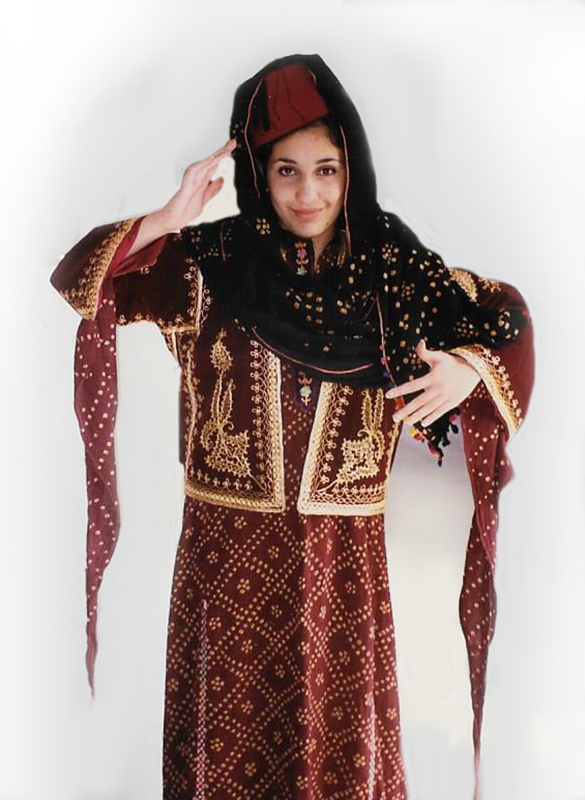These dresses from Hama are also called 'ezze' for short. This popular name originates in the Arabic words for the silkworm: dudat al qazz or more simply 'gazz'. In spoken Syrian dialect a hard consonant such as 'g' or 'q' at the beginning of a word may be dropped, and the resulting 'ezze' means 'relating to the silk worm'.
Ezze dresses are worn for weddings and festive occasions and form part of the bride's trousseaux. The sharp and clean geometric pattern in which this raw silk dress is dyed is extraordinary, an indication that it was commissioned from a professional artist rather than being produced by the wearer.
This style of wing sleeve dates back to medieval times but other dresses of this type had closed sleeves with wristbands.This dress was frequently paired with a taqsireh (short jacket) or a long sleeveless embroidered coat. Its patterns and colors are decorative but also have magical protection: orange / yellow spots are supposed to protect the wearer from the evil eye.
The two color patterns most frequently used in the dyes applied to the original white fabric are:
- yellow, salmon, or orange first, then a second or third application of a darker red or wine
- first peach, then red, and finally indigo blue.
Frequently headscarves also worked in plangi were worn with the dress. The silk scarf seen above features multicolored coloring produced in a series of dye baths, with the final dye in an aniline black shade. |

